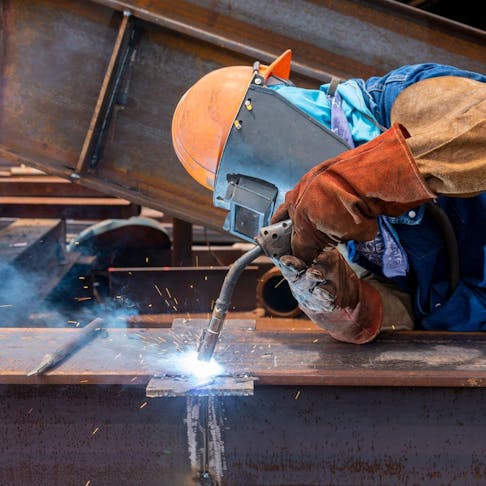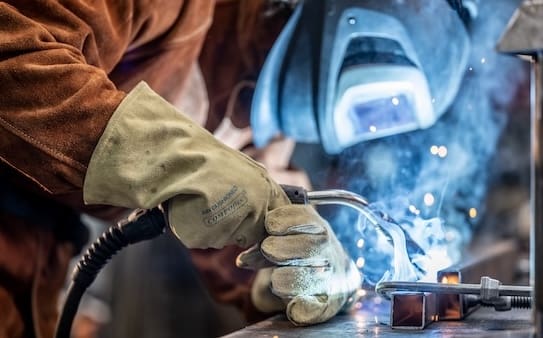Best ways to deal with warping in Montana Mobile Welding and Repair Belgrade
Usual Welding Repair Issues and Exactly How to Address Them Properly
Welding fixings usually come across a variety of problems that can threaten the stability of the end product. Typical issues include inadequate infiltration, porosity, and misalignment, to name a few. Each defect offers distinct difficulties that require details approaches for resolution. Understanding these problems is vital for welders intending to enhance their outcomes and skills. This conversation will explore these typical welding repair service concerns and reliable techniques to resolve them.
Insufficient Penetration
Poor infiltration happens when the weld steel stops working to fully fuse with the base product, resulting in weak joints and prospective architectural failures. This concern frequently stems from not enough heat input, wrong electrode angle, or inappropriate welding rate. Welders may encounter poor infiltration because of a mistake of the needed specifications for a specific material density or kind. In addition, contamination on the base product's surface area can prevent reliable bonding, exacerbating the trouble. To resolve inadequate penetration, welders need to ensure appropriate settings on their equipment and maintain a clean work surface. Regular inspection of welds is recommended to recognize any type of shortages early, permitting for timely adjustments and the prevention of endangered structural honesty in bonded settings up.
Porosity
Porosity is an usual flaw in welded joints that manifests as little gas bubbles entraped within the weld steel. This issue can jeopardize the honesty of the weld, causing reduced strength and possible failing under stress. Montana Mobile Welding and Repair Belgrade Welding. Porosity generally arises from contamination, wetness, or inappropriate welding methods, which permit gases to escape right into the liquified weld swimming pool. To address porosity, welders need to ensure correct surface prep work, keep a clean workplace, and use ideal welding criteria. Additionally, choosing the ideal filler product and securing gas can minimize gas entrapment. Regular examination and testing of welds can assist determine porosity early, assuring prompt corrective actions are taken, thereby maintaining the high quality and reliability of the bonded framework
Misalignment
Imbalance in welding can develop from numerous aspects, consisting of inappropriate setup and thermal expansion. Comprehending the origin is essential for efficient resolution. A number of adjustment methods are offered to straighten elements and assure structural honesty.
Sources of Misalignment
Welding misalignment commonly originates from a variety of underlying issues that can jeopardize structural integrity. One key cause is inappropriate fit-up of elements before welding, which can lead to spaces and irregular surface areas. Variants in thermal expansion throughout the welding procedure can additionally result in distortion, specifically if the products being signed up with have various coefficients of development. Furthermore, poor securing and fixturing may fail to hold parts firmly in location, bring about movement throughout welding. Poorly kept devices, consisting of welding makers and tools, may introduce disparities in the weld bead, further contributing to imbalance. Lastly, driver mistake, stemming from inadequate training or experience, can also play a considerable role in developing misaligned welds.
Correction Strategies Available
Dealing with misalignment efficiently requires a mix of corrective methods customized to the certain concerns handy. One typical technique is using components or jigs to hold parts in the right position during welding, making sure regular positioning. In addition, pre-heating the products can help in reducing distortion and boost fit-up. For significant misalignment, mechanical adjustment techniques, such as using hydraulic jacks or clamps, can be used to deal with the placement before welding. Post-weld warm therapy might additionally be essential to alleviate tensions triggered by imbalance. Ultimately, careful assessment and adjustment during the configuration stage can avoid imbalance concerns from coming to be considerable issues, advertising a smoother welding procedure and improving overall architectural stability.
Distortion
Distortion is a common challenge in welding that can emerge from various factors, consisting of irregular heating & cooling. Recognizing the sources of distortion is essential for applying efficient avoidance methods. Resolving this concern not just enhances structural honesty yet also enhances the overall high quality of the weld.
Reasons of Distortion
When based on the intense warmth of welding, materials often undertake modifications that can lead to distortion. This sensation mainly develops from thermal expansion and tightening throughout the welding process. As the weld area warms up, the product increases; upon air conditioning, it contracts, which can create interior anxieties. In enhancement, irregular heating across a workpiece can intensify these stresses, resulting in bending or flexing. The sort of material additionally plays a significant duty; steels with varying thermal conductivity and coefficients of growth might react in a different way, resulting in uncertain distortions. Furthermore, bad joint layout and inadequate fixturing can add to misalignment throughout welding, increasing the chance of distortion. Comprehending these reasons is essential for efficient welding repair service and avoidance techniques.
Prevention Techniques
Reliable prevention methods for distortion throughout welding concentrate on controlling heat input and making sure correct joint design. Keeping a constant warm input helps to minimize thermal development and tightening, which can result in distortion. Making use of techniques such as pre-heating the workpiece can additionally lower the temperature level slope, advertising consistent heating. Furthermore, selecting suitable joint designs, such as T-joints or lap joints, can boost stability and lower stress and anxiety concentrations. Executing proper fixturing to secure this link the work surfaces in place even more help in preserving placement during the welding procedure. Lastly, staggered welding sequences can distribute warmth more equally, stopping local distortion. By using these approaches, welders can greatly decrease the probability of distortion and improve the general high quality of their welds.
Splitting
Cracking is an usual issue come across in welding repairs, often arising from different aspects such as inappropriate cooling rates, material option, or poor joint preparation. The incident of cracks can considerably jeopardize the integrity of the weld, resulting in prospective failings throughout operation. To resolve this issue, welders must first evaluate the root creates, making sure that products work and appropriately selected for the specific application. In addition, regulating the cooling rate throughout the welding process is essential; rapid cooling can cause anxiety and cause cracking. Proper joint style and prep work likewise add to reducing the danger. Applying these approaches can improve weld high quality and sturdiness, ultimately lowering the likelihood of cracking in finished weldments.

Incomplete Blend
A significant concern in welding repairs is insufficient fusion, which happens when the weld steel does not properly bond with the base product or previous weld passes - Fabrication. This defect can result in weaknesses in the joint, possibly compromising the stability of the welded structure. Aspects contributing to incomplete combination include inadequate heat input, improper welding strategy, and contamination of the surfaces being signed up with. To resolve this concern successfully, welders ought to assure proper pre-weld cleansing and surface area prep work, along with adjust their welding criteria to achieve adequate infiltration and blend. Routine examination throughout go right here the welding process can also assist recognize insufficient blend early, enabling timely restorative actions to enhance the total quality of the weld
Overheating
While welding fixings can enhance architectural stability, overheating provides a considerable obstacle that can bring about product deterioration. Too much heat during welding can modify the mechanical residential properties of metals, resulting in minimized stamina, increased brittleness, and warping. This phenomenon is specifically important in high-stress applications where architectural dependability is paramount. Determining overheating can entail visual evaluations for discoloration or distortion, in addition to checking temperature throughout the welding procedure. To alleviate the dangers linked with getting too hot, welders should employ ideal methods, such as controlling warmth input, adjusting travel speed, and using suitable filler products. In addition, implementing pre- and post-weld warm therapies can aid recover product properties and improve the general high quality of the repair work, making sure long-lasting performance and safety and security.
Often Asked Inquiries
What Are the Typical Indications of a Welding Problem?

Exactly How Can I Evaluate My Welds for Top quality?
To test welds for top quality, one can use visual assessments, ultrasonic screening, and radiographic techniques. Each technique guarantees architectural integrity, recognizes defects, and verifies adherence to specified standards, eventually enhancing the dependability of the welded joints.
What Safety Precautions Should I Take While Welding?
When welding, one must focus on safety by putting on suitable individual safety equipment, making sure correct air flow, securing flammable materials away, preserving a tidy workspace, and recognizing environments to stop accidents and injuries.
Can I Repair a Weld Without Renovating the Entire Joint?
Repairing a weld without renovating the entire joint is possible, depending on the damage (Montana Mobile Welding and Repair Fabrication). Methods such as grinding, including filler product, or making use of a welding process can effectively deal with details problems while protecting the surrounding structure
What Equipment Are Vital for Efficient Welding Repair Works?
Important tools for effective welding fixings include a welding equipment, wire brush, grinder, safety equipment, clamps, and filler materials. Each device plays a crucial function in making sure top quality and safety and security during the repair work process. Porosity generally develops directory from contamination, dampness, or improper welding methods, which allow gases to get away into the molten weld swimming pool. Inadequately kept tools, including welding makers and devices, may present disparities in the weld grain, additional adding to misalignment. When subjected to the extreme warmth of welding, materials typically undertake modifications that can lead to distortion. Cracking is an usual concern come across in welding repair work, frequently resulting from numerous factors such as inappropriate cooling prices, product selection, or poor joint preparation. A substantial problem in welding fixings is insufficient blend, which takes place when the weld steel does not sufficiently bond with the base product or previous weld passes.